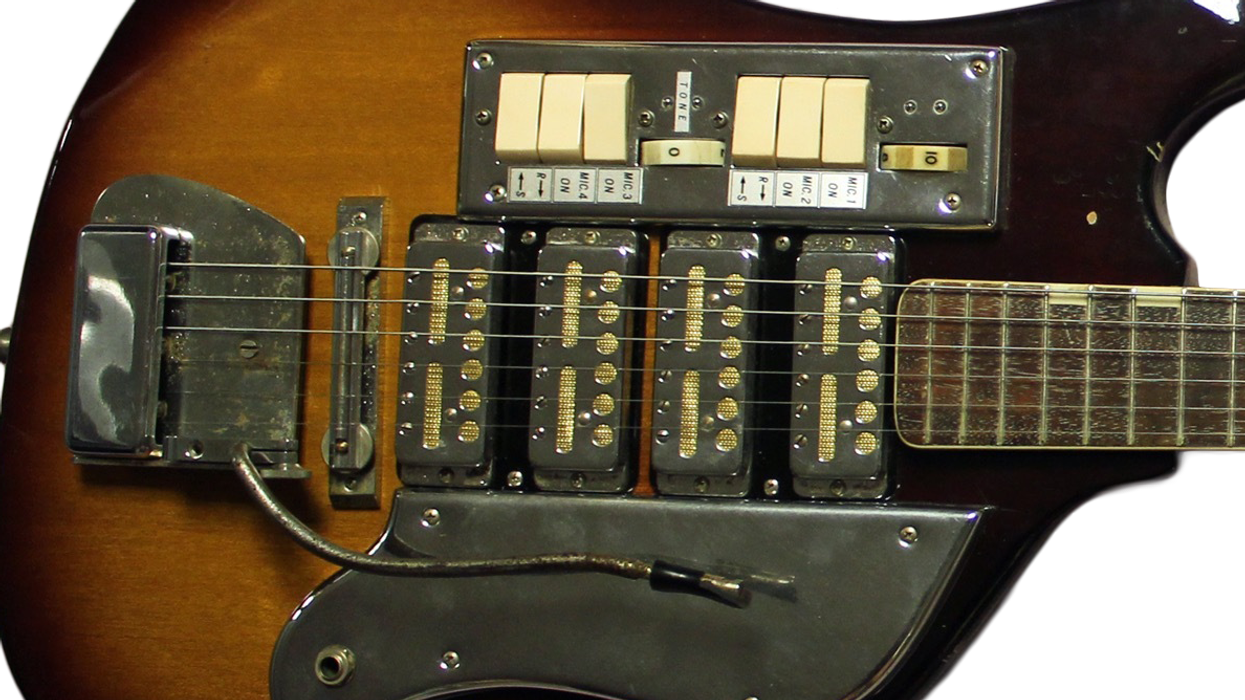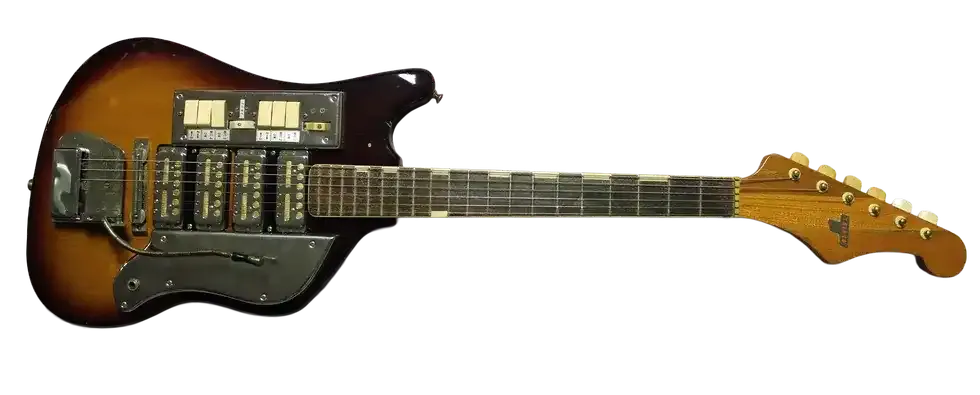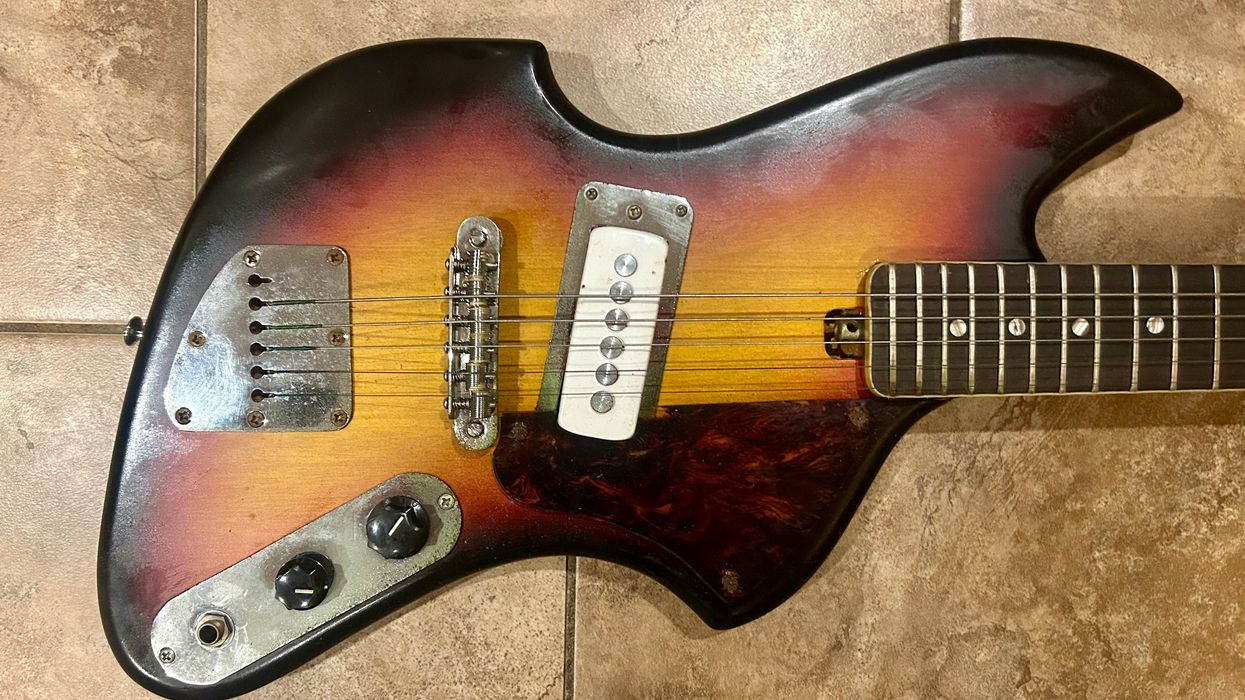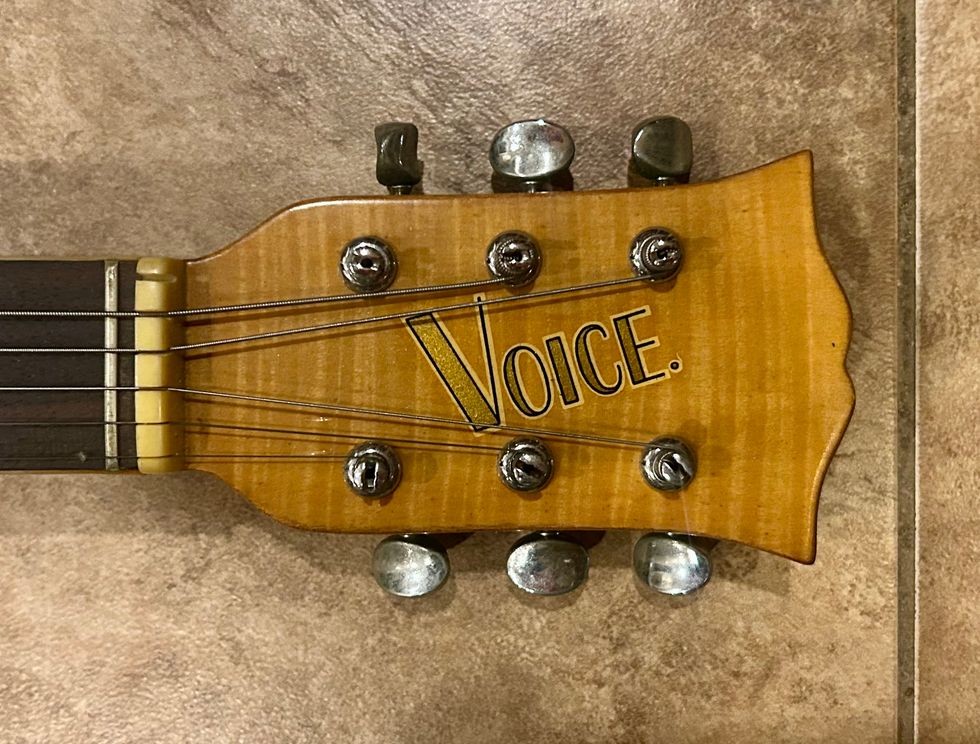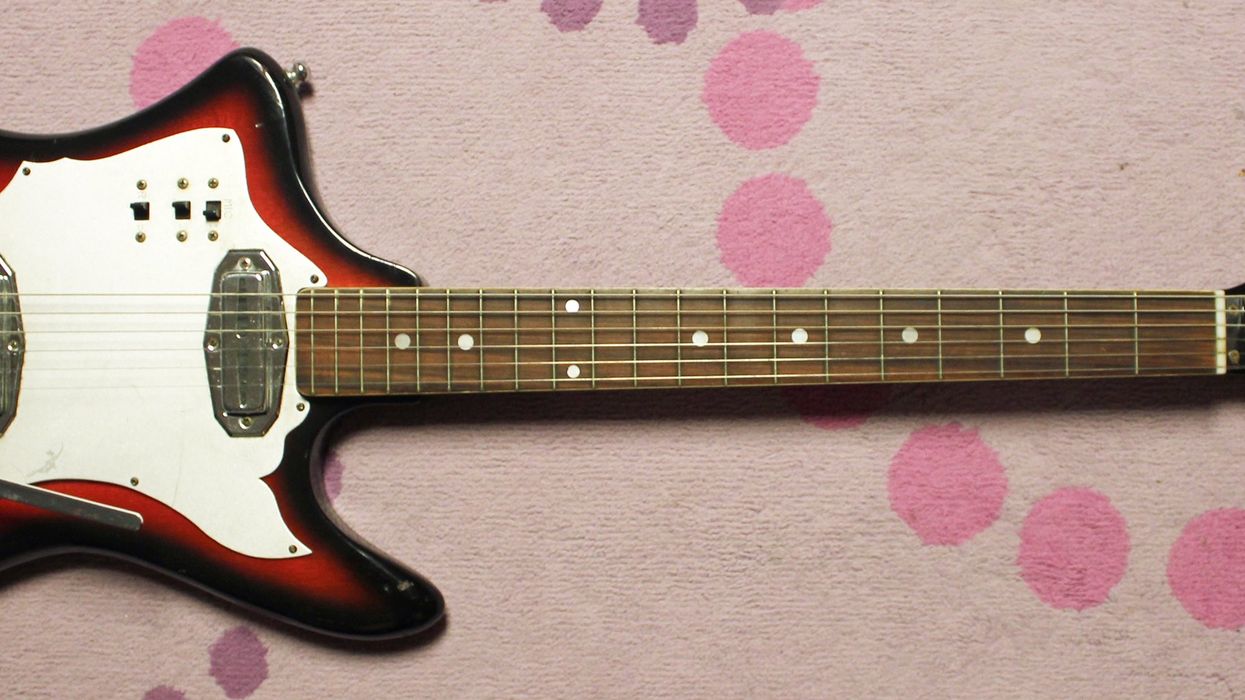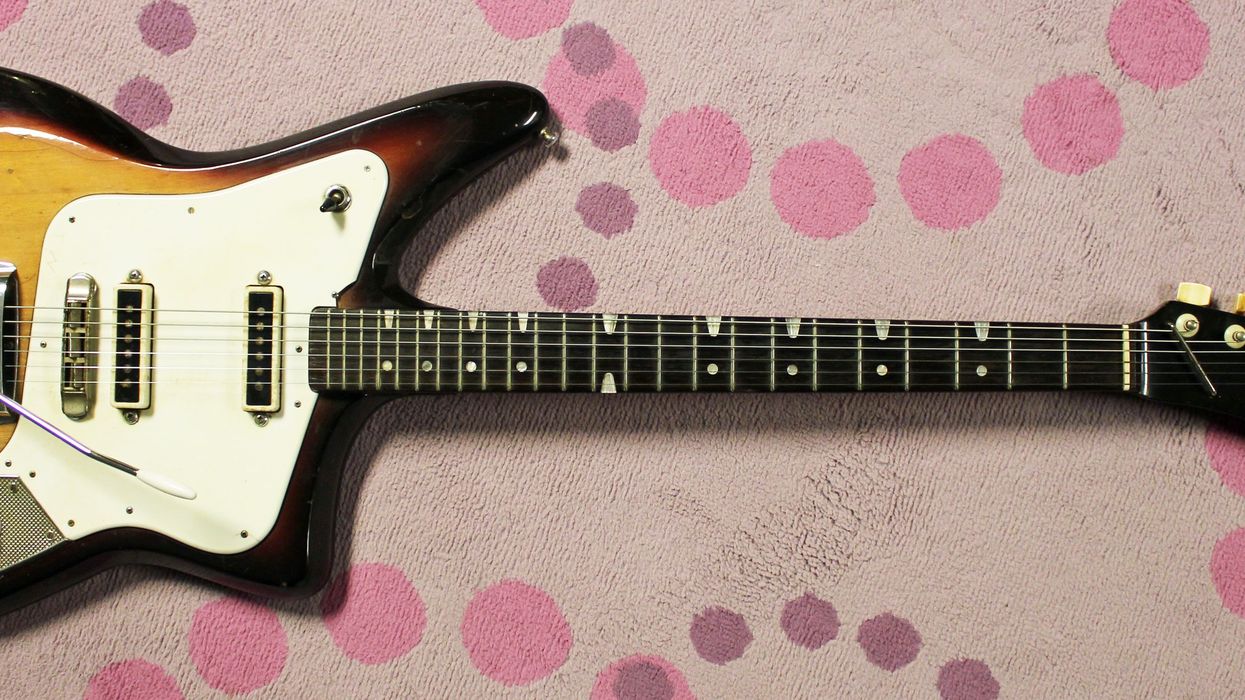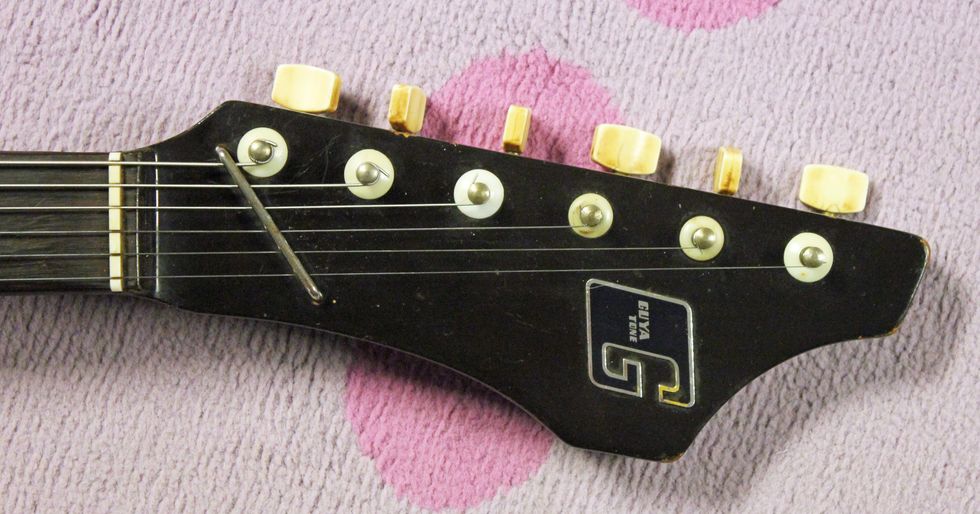Danelectro guitars and amps have long held the interest of so many players because of their quirky designs. The prolific New Jersey-based company, started by Nathan Daniel in 1947, used unique materials—from Masonite for bodies to surplus lipstick tubes for pickups—to create their instruments while staying on budget. With prices just about any player could afford, Danelectro guitars—and those sold under other retail-catalog brand names across the U.S., such as Sears’ Silvertone—had a strong impact on the arc of American music.
Even during the initial influx of Japanese import guitars, Danelectro still retained its foothold in the American market. But the era of corporate takeovers really affected the market of the late 1960s. CBS purchased Fender, Norlin bought Gibson, and, in 1966, Danelectro was sold to the Music Corporation of America (MCA). In 1967, MCA started the new Coral line of guitars, which offered some unique axes like an electric 12-string Bellzouki, an electric Sitar (complete with drone strings), and Longhorn hollow bodies. It was all so ’60s, and all so short-lived, because Danelectro was bankrupt by 1969. The entire Coral line has become collectible because just about every model was sold in low numbers, but perhaps the rarest of the bunch was the solidbody electric Hornet.
Session guitarist Vincent Bell had a hand in designing many of the Coral guitars, and the Hornet models were among his creations. (There was also a 12-string offered in 1968, called the Scorpion.) The Hornets came in two- or three-pickup versions, offered with vibrato or hardtail bridge designs. Individual volume controls for each pickup, plus a master volume, provide blending options, and an array of tone variations are available via four mini switches. These overly complicated tone switches are buried in all sorts of capacitors and were all the rage in the late 1960s. But all of them are detrimental to the overall guitar sound.
Danelectro’s trademark lipstick pickups were still in use at this time, and they retain that soft vintage tone, with a little sizzle when pickups are combined. I love the sound of these pickups combined with an amp on the edge of breaking up, or some fuzz stacked on top. Danelectro pickups have often been relegated to niche sound territory—like Jimmy Page with a slide—but no other guitar sounds like a Danelectro, and that’s a good thing! Plus, a lot of players might also like the bigger frets and flat radius featured on almost every Danelectro guitar.

The Coral Hornet has a totally unique sculpted solid-poplar body, which tapers towards the edges. It is the strangest feeling guitar ever, because the outer edges of the body really thin out. Honestly, I’ve never seen another guitar with this design. It does make for a nice feel when you’re playing while standing, since the thin contours kind of melt into your body. But sitting down is a different experience, and those thin edges can make it feel like your leg is getting sliced off.
The Hornets came in black, red, and sunburst finishes, and the latter are the most common, relatively speaking. The chromed-out control plates and pickup surrounds look upscale, while a swirling pearloid pickguard and clear plastic overlay gives the guitars a pseudo-psychedelic look.
Looking at the old Coral catalogs, it seems that Pete Townsend flirted with the Hornet models for a spell, and, more recently, Dan Auerbach of the Black Keys played one. But overall, these rare Hornets with their sculpted bodies faded into the passage of time, gone like a bubble on a stream. Or a corporate buyout.
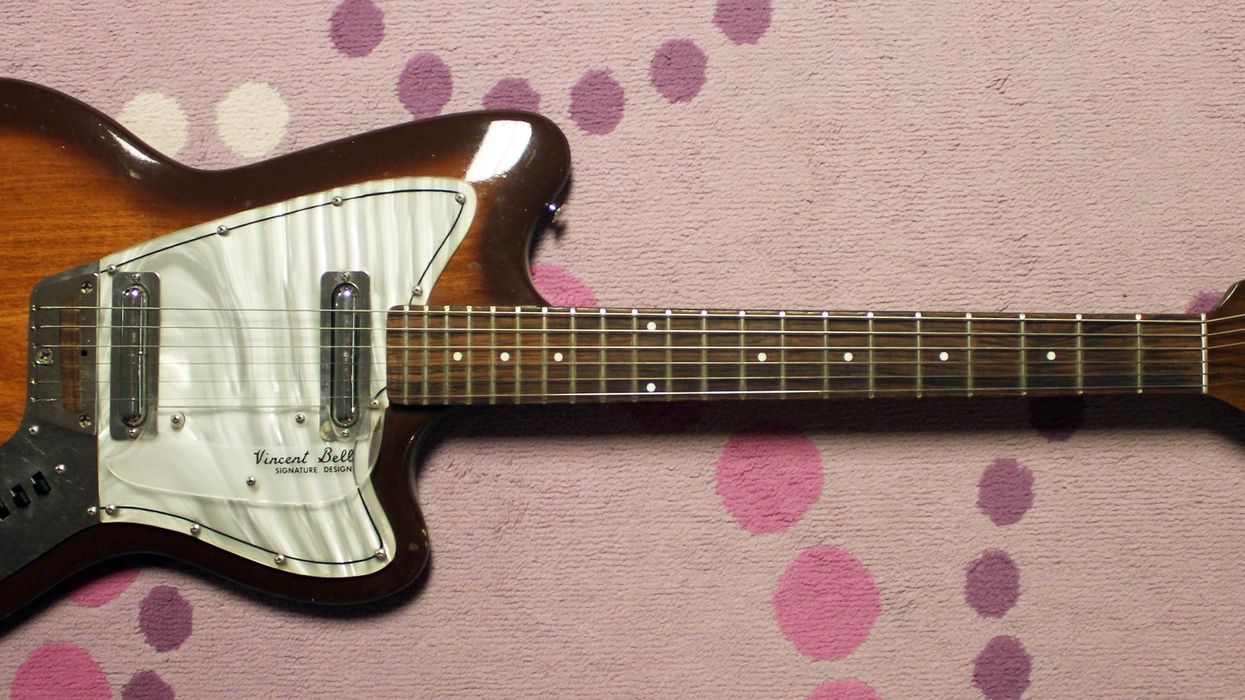

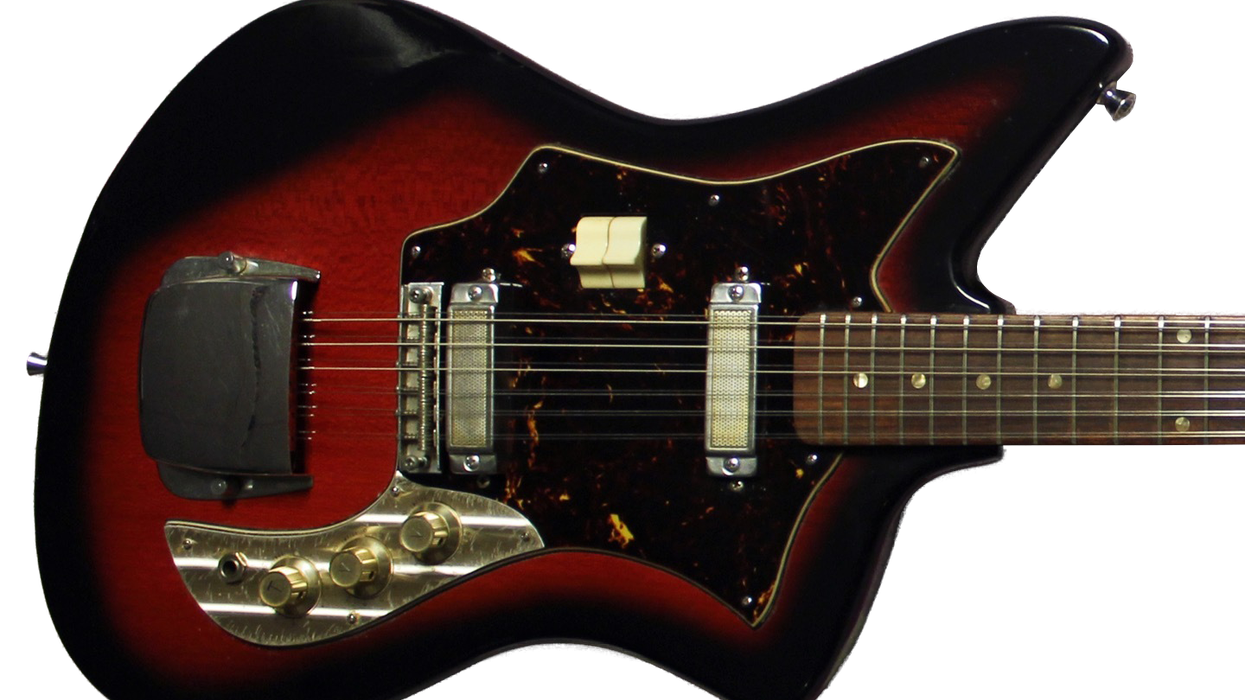
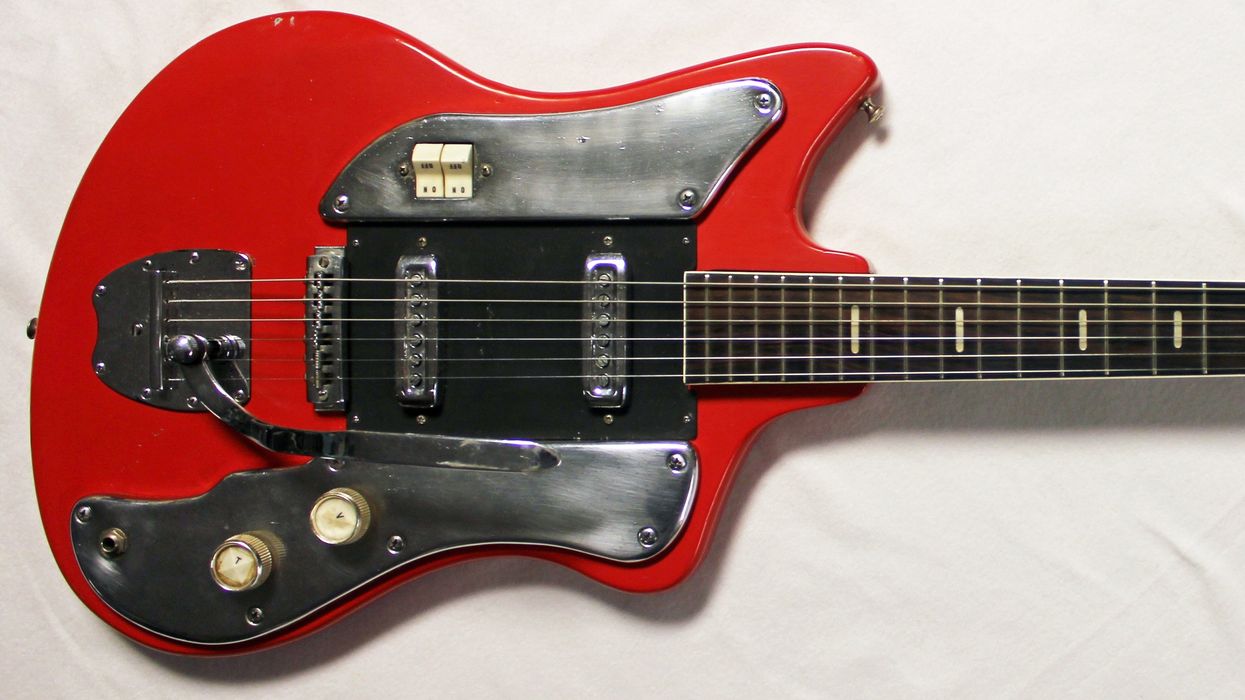
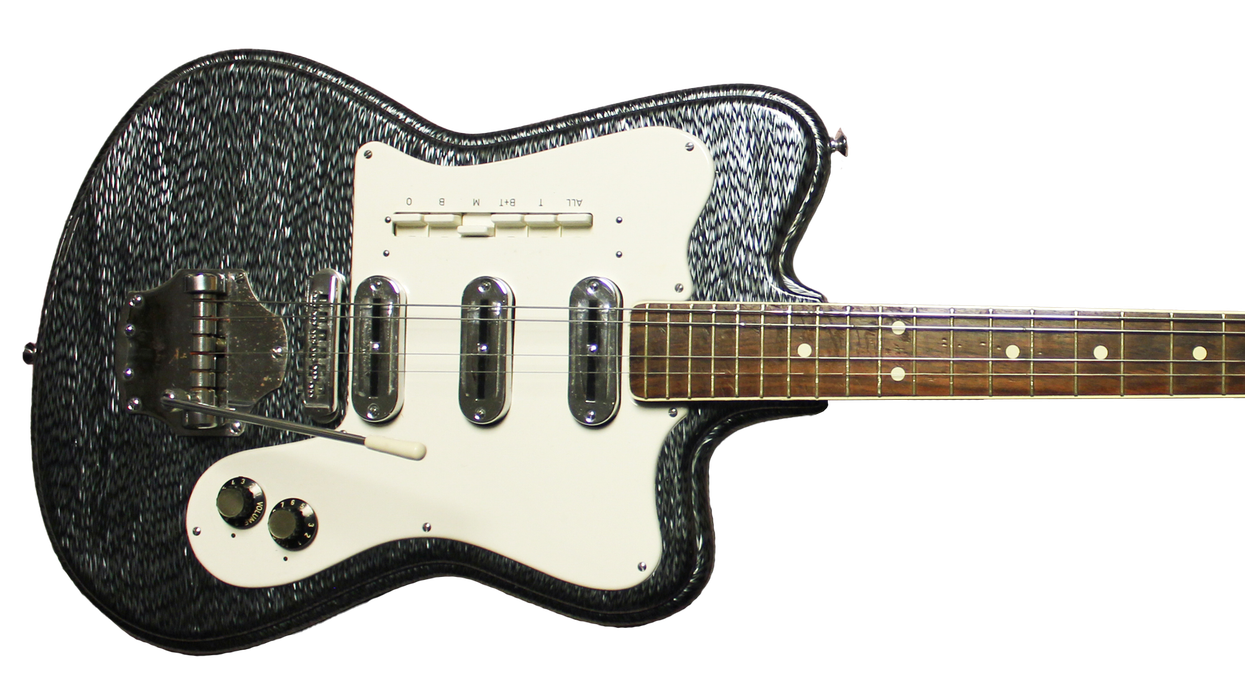
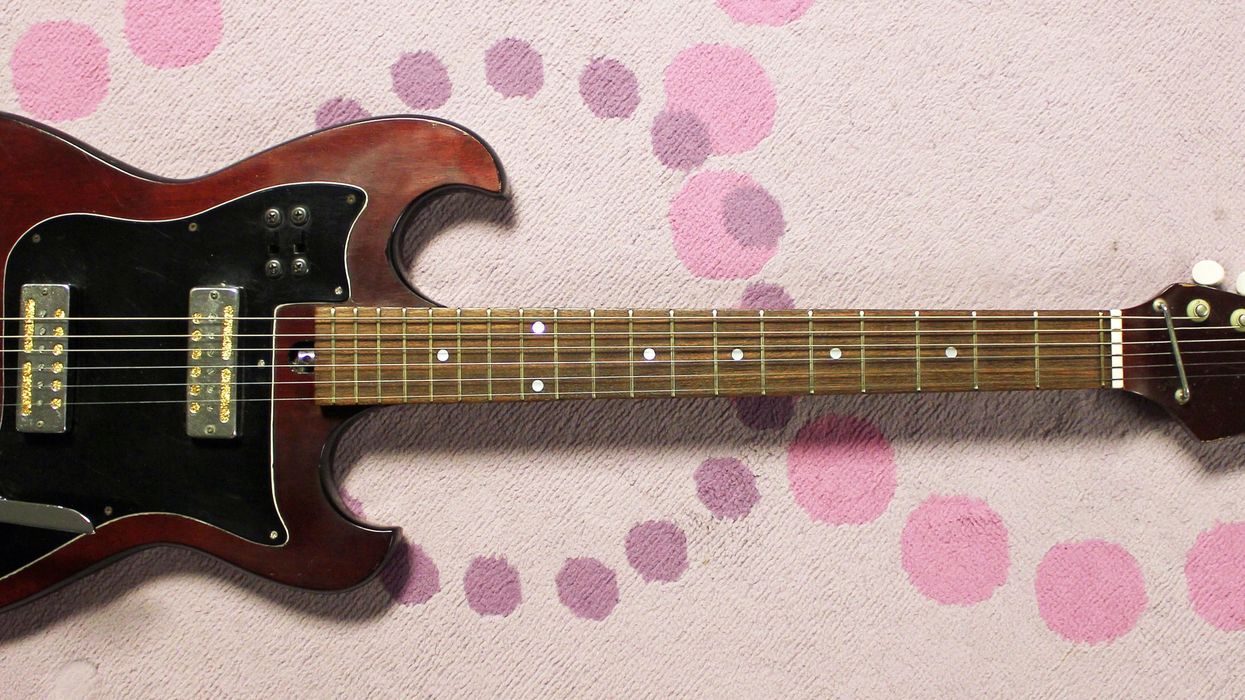
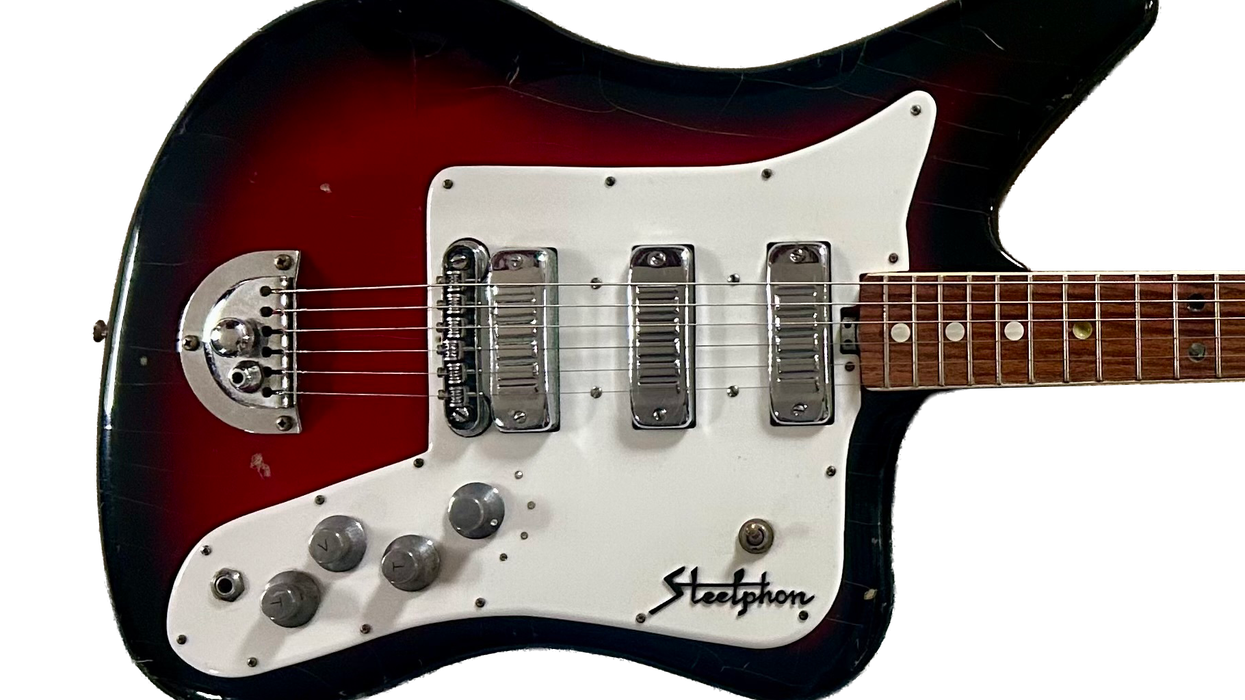
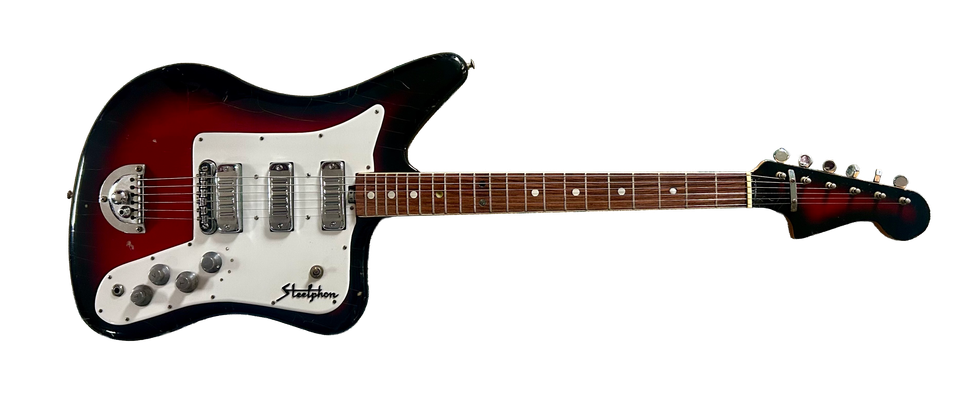 Then, in the dream, I “awoke” and realized I was back in my bedroom, and it was all just a dream. The kicker is that I was still dreaming, because that “paddle” guitar was suddenly in my hands—then I woke up for real! How about that misadventure?
Then, in the dream, I “awoke” and realized I was back in my bedroom, and it was all just a dream. The kicker is that I was still dreaming, because that “paddle” guitar was suddenly in my hands—then I woke up for real! How about that misadventure?![Devon Eisenbarger [Katy Perry] Rig Rundown](https://www.premierguitar.com/media-library/youtube.jpg?id=61774583&width=1245&height=700&quality=70&coordinates=0%2C0%2C0%2C0)





